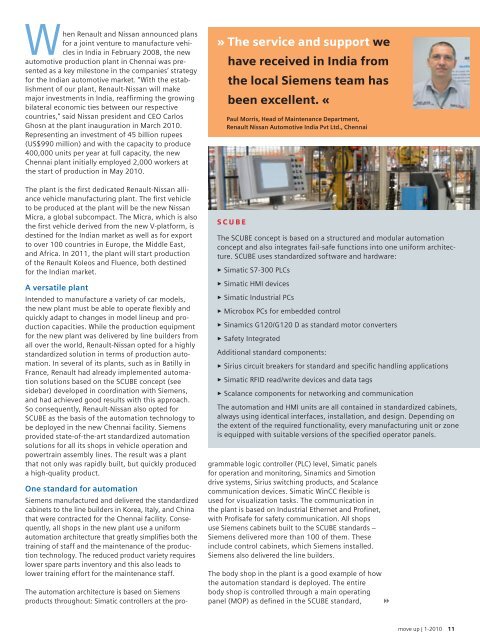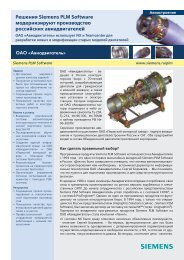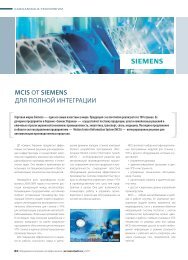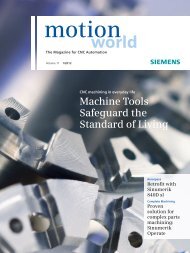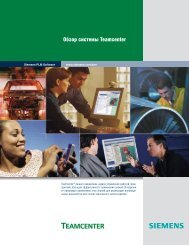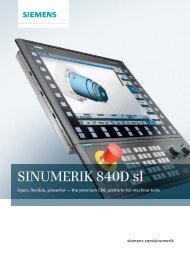High Standards, Local Support
High Standards, Local Support
High Standards, Local Support
Create successful ePaper yourself
Turn your PDF publications into a flip-book with our unique Google optimized e-Paper software.
When Renault and Nissan announced plansfor a joint venture to manufacture vehiclesin India in February 2008, the newautomotive production plant in Chennai was presentedas a key milestone in the companies’ strategyfor the Indian automotive market. “With the establishmentof our plant, Renault-Nissan will makemajor investments in India, reaffirming the growingbilateral economic ties between our respectivecountries,” said Nissan president and CEO CarlosGhosn at the plant inauguration in March 2010.Representing an investment of 45 billion rupees(US$990 million) and with the capacity to produce400,000 units per year at full capacity, the newChennai plant initially employed 2,000 workers atthe start of production in May 2010.The plant is the first dedicated Renault-Nissan alliancevehicle manufacturing plant. The first vehicleto be produced at the plant will be the new NissanMicra, a global subcompact. The Micra, which is alsothe first vehicle derived from the new V-platform, isdestined for the Indian market as well as for exportto over 100 countries in Europe, the Middle East,and Africa. In 2011, the plant will start productionof the Renault Koleos and Fluence, both destinedfor the Indian market.A versatile plantIntended to manufacture a variety of car models,the new plant must be able to operate flexibly andquickly adapt to changes in model lineup and productioncapacities. While the production equipmentfor the new plant was delivered by line builders fromall over the world, Renault-Nissan opted for a highlystandardized solution in terms of production automation.In several of its plants, such as in Batilly inFrance, Renault had already implemented automationsolutions based on the SCUBE concept (seesidebar) developed in coordination with Siemens,and had achieved good results with this approach.So consequently, Renault-Nissan also opted forSCUBE as the basis of the automation technology tobe deployed in the new Chennai facility. Siemensprovided state-of-the-art standardized automationsolutions for all its shops in vehicle operation andpowertrain assembly lines. The result was a plantthat not only was rapidly built, but quickly produceda high-quality product.One standard for automationSiemens manufactured and delivered the standardizedcabinets to the line builders in Korea, Italy, and Chinathat were contracted for the Chennai facility. Consequently,all shops in the new plant use a uniformautomation architecture that greatly simplifies both thetraining of staff and the maintenance of the productiontechnology. The reduced product variety requireslower spare parts inventory and this also leads tolower training effort for the maintenance staff.» The service and support wehave received in India fromthe local Siemens team hasbeen excellent. «Paul Morris, Head of Maintenance Department,Renault Nissan Automotive India Pvt Ltd., ChennaiSCUBEThe SCUBE concept is based on a structured and modular automationconcept and also integrates fail-safe functions into one uniform architecture.SCUBE uses standardized software and hardware:3 Simatic S7-300 PLCs3 Simatic HMI devices3 Simatic Industrial PCs3 Microbox PCs for embedded control3 Sinamics G120/G120 D as standard motor converters3 Safety IntegratedAdditional standard components:3 Sirius circuit breakers for standard and specific handling applications3 Simatic RFID read/write devices and data tags3 Scalance components for networking and communicationThe automation and HMI units are all contained in standardized cabinets,always using identical interfaces, installation, and design. Depending onthe extent of the required functionality, every manufacturing unit or zoneis equipped with suitable versions of the specified operator panels.The automation architecture is based on Siemensproducts throughout: Simatic controllers at the programmablelogic controller (PLC) level, Simatic panelsfor operation and monitoring, Sinamics and Simotiondrive systems, Sirius switching products, and Scalancecommunication devices. Simatic WinCC flexible isused for visualization tasks. The communication inthe plant is based on Industrial Ethernet and Profinet,with Profisafe for safety communication. All shopsuse Siemens cabinets built to the SCUBE standards –Siemens delivered more than 100 of them. Theseinclude control cabinets, which Siemens installed.Siemens also delivered the line builders.The body shop in the plant is a good example of howthe automation standard is deployed. The entirebody shop is controlled through a main operatingpanel (MOP) as defined in the SCUBE standard,move up | 1-2010 11


